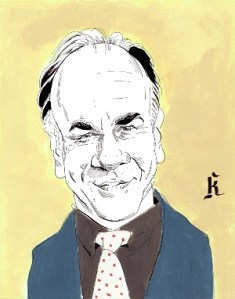Robert Watson of EchoTech International on the Early Days of LEED Certification
By Daniel Edward Rosen March 15, 2012 10:30 am
reprintsRobert Watson, known as one of the pioneers of the Leadership in Energy and Environmental Design certification process, has helped prompt office developers and owners to consider energy-saving measures across the nation. Mr. Watson spoke with The Commercial Observer last week about LEED’s origins and his role in bringing sustainability to foreign markets as founder of the advisory firm EchoTech International.

The Commercial Observer: How did the concept of the LEED Green Building Rating System first come about?
Mr. Watson: At the time I was working [as a senior scientist] with the Natural Resources Defense Council, we were the only nongovernmental organization environmental group that was a member. But we had a pretty deep expertise in buildings, and I had been working on codes and standards for several years in California and in the Pacific Northwest and Russia and knew the power of standards as a way of driving market change.
We started trying to figure out what do buildings impact environmentally, and I was asking a lot of my colleagues in the NRDC, “How do buildings intersect what you do, whether it’s transportation or storm water or energy?” The very first beginnings were very crude. We literally had a laundry list—alphabetical—of actions. And the idea was that some actions would be mandatory and some actions would be voluntary.
Prior to LEED, what were buildings most guilty of in terms of energy consumption?
Buildings actually built prior to the war in many respects weren’t that bad, energy-wise, because they actually recognized that things such as seasons and sunlight existed. They had larger windows. They were massive in colder climates. The windows were still terrible based on the technology, but at least they weren’t like total electric hogs and a lot of them didn’t have air conditioning.
Since starting your own firm, you have been working a great deal with China and India. Has China really taken to LEED, or has it been a tougher sell?
Certain classes of buildings, buildings that aspire for international clients, buildings that aspire for market leadership, there is a lot of—China is the biggest market outside of the U.S. in terms of floor area—well, India and China are very close. India has officially adopted LEED whereas China has their own green standard. But the market has been pretty receptive to it. They like its workability and so it’s done pretty well. But compared to the total floor area being built, it’s just a drop in the bucket. What it’s done is that it’s elevated the profile for green buildings.
Name some of the new “green” buildings you’re most impressed with.
The one that gets the most press is Bank of America. Goldman Sachs just opened up their new building. There’s the International Finance Center, which is the tallest building in Shanghai, and pretty much every new building in Shanghai is going LEED. There’s the Shanghai Tower. There’s the IFC in Shenzhen. A lot of it is under construction or being finished. The World Trade Center in Beijing, the Ministry of Science and Technology was the first building certified, that was a project I worked on with NRDC. There’s several neighborhood developments going up with millions of square feet.
How effective do you think LEED has been as of late?
Very soon you are not going to be able to call yourself class A unless you are LEED certified. That’s basically what happened with air conditioning. That technology disrupted the market and created a new definition of green. If you look at all the major projects coming in in markets like New York, Chicago, LA, Portland, San Francisco, Dallas, Houston, a majority and a pretty significant majority is registered and/or certified to LEED. Basically, they are better buildings. They cost less to operate and that’s not universally true – sometimes things don’t work as designed, or some things are not operated well, even though they are not designed well.



